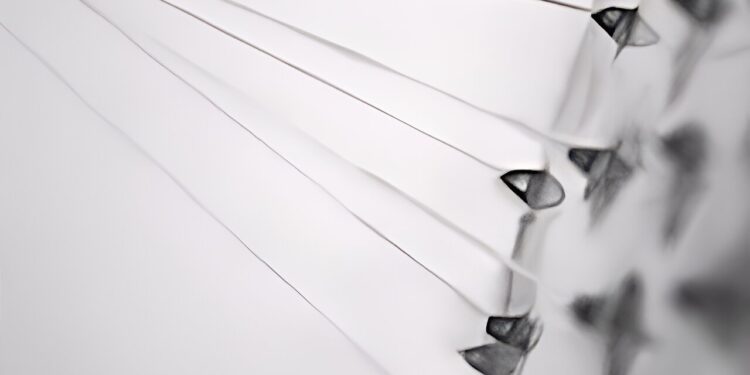Scientists create artificial spider silk by pulling strands from a set of tiny hollow needles, as shown here, similar to how arachnids do. Credit: ACS Nano (2024). DOI: 10.1021/acsnano.4c08557
It’s almost time to dust off the Halloween decorations and deck out the house with all sorts of spooky things, including the classic polyester spider webs. Scientists report in ACS Nano Scientists have created their own version of fake spider silk, but this one is made of protein and heals wounds instead of haunting the hallways. The artificial silk was strong enough to be woven into bandages that helped treat joint injuries and skin lesions in mice.
Spider silk is one of the strongest materials on Earth, technically stronger than steel for a material of its size. However, it is difficult to obtain: spiders are too territorial (and cannibalistic) to reproduce them like silkworms, leading scientists to turn to artificial options.
One option is to teach microbes to produce spider silk proteins through genetic engineering, but this has proven difficult because the proteins tend to stick together, reducing the yield of the silk. So Gao and his colleagues wanted to tweak the natural protein sequence to design easy-to-spin, yet stable, spider silk using microbes.
The team first used these microbes to produce silk proteins, also adding additional peptides. The new peptides, following a pattern found in the protein sequence of amyloid polypeptides, helped the artificial silk proteins form an ordered structure when folded and prevented them from sticking together in solution, increasing their yield.
Then, using a set of tiny hollow needles attached to the nozzle of a 3-D printer, the researchers sucked the protein solution into thin strands from the air and wove them together to form a thicker fiber. This configuration acted like a giant artificial spider spinning its web.
Credit: ACS Nano (2024). DOI: 10.1021/acsnano.4c08557
They then spun their artificial silk fibers into prototype bandages, which they applied to mice with osteoarthritis (a degenerative joint disease) and chronic wounds caused by diabetes. Drug treatments were easily added to the bandages, and the team found that the modified bandages stimulated wound healing better than traditional bandages.
Compared to a control group with neutral dressings, mice with osteoarthritis showed reduced swelling and repair of tissue structure after 2 weeks of treatment, while diabetic mice with skin lesions treated with a similar dressing showed significant wound healing after 16 days of treatment. The new silk dressings are biocompatible and biodegradable, and the researchers say they hold promise for future applications in medicine.
More information:
Baoyang Lin et al., Microneedle spinneret based on overexpressed artificial spidroin for 3D air spinning of hybrid spider silk, ACS Nano (2024). DOI: 10.1021/acsnano.4c08557
Provided by the American Chemical Society
Quote:Spinning artificial spider silk into next-generation medical materials (2024, September 24) retrieved September 24, 2024 from
This document is subject to copyright. Apart from any fair dealing for the purpose of private study or research, no part may be reproduced without written permission. The content is provided for informational purposes only.



